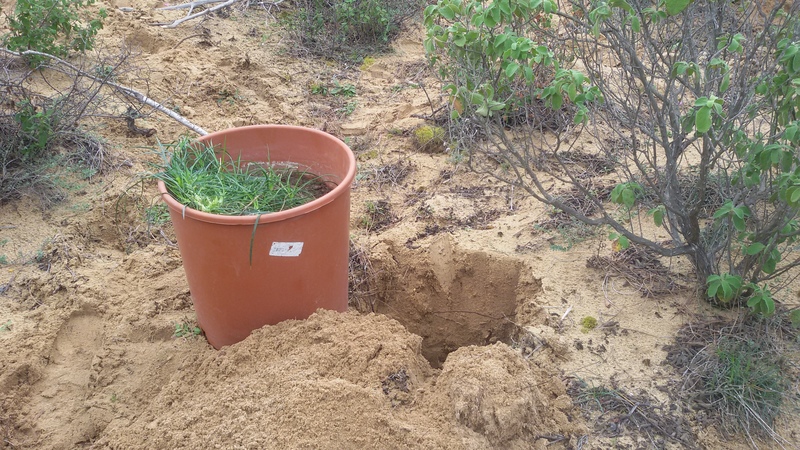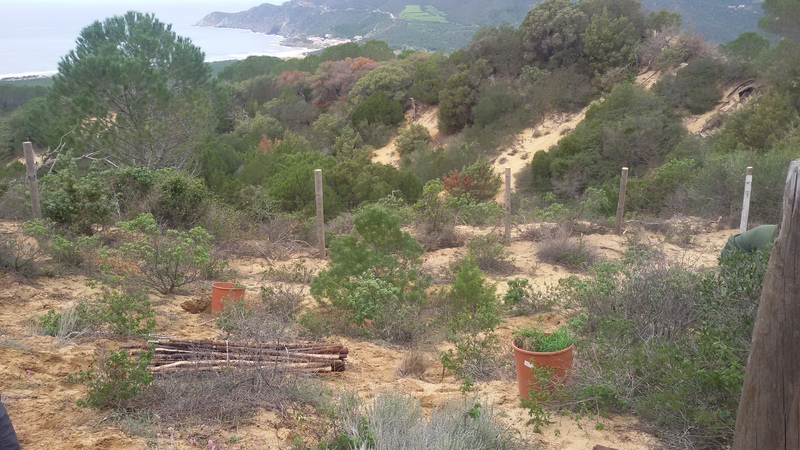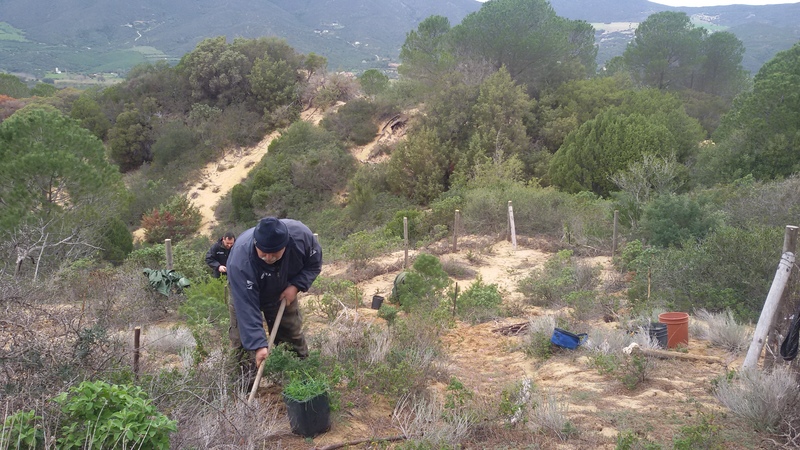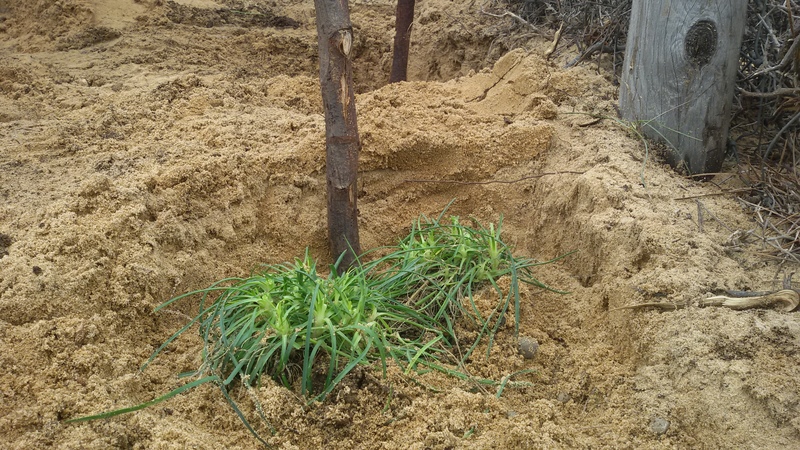- Home
- Chi siamo
- News
- Pubblicazioni
- Partners
- Gruppo Specialistico sulle Piante Mediterranee (IUCN / SSC)
- Fondazione Giardino Botanico di Sóller
- Conservatorio Botanico Nazionale della Regione Corsa
- Orto Botanico di Cagliari
- Università di Catania
- Istituto Agronomico Mediterraneo di Chania
- Istituto di Ricerca Agraria di Cipro
- Dipartimento Forestale di Cipro
- Outputs
- Contatti
Conservation Actions for Threatened Mediterranean Island Flora: ex situ and in situ joint actions
Translocation of Dianthus morisianus, one of the most threatened plants of Sardinia
02 March 2018
Dianthus morisianus (Caryophyllaceae), the only psammophilous taxon belonging to the Dianthus sylvestris Wulf. complex, is a perennial suffrutex characterized by numerous woody stocks and erect stems, and by a basal rosette with thin and linear leaves. The flowering season lasts from early May to late June, whereas ripe fruits can be found during June and July (Cogoni et al. 2012).
D. morisianus is a narrow endemic plant of Sardinia, currently restricted to the Portixeddu coastal dune system (south-west Sardinia), where it grows on stabilized dunes. The natural habitat of D. morisianus has been strongly altered by human-related threats (touristic facilities, agricultural and reforestation activities), causing considerable habitat loss and fragmentation. Moreover, the small population size and the high level of unregulated grazing make D. morisianus prone to extinction (Fenu et al. 2016). For this reason, it is considered one of the most threatened plants on the island (Bacchetta et al. 2012) and it is listed as critically endangered in the Global Red Lists (Fenu et al. 2013).
The CARE-MEDIFLORA team in Sardinia (Hortus Botanicus Karalitanus, HBK partner) started the in situ conservation action for this threatened plant species which consisted in a translocation program of the plants multiplied ex situ in a protected site managed by the public administration “Agenzia Fo.Re.S.T.A.S” (Agenzia Forestale Regionale per lo Sviluppo del Territorio e l'Ambiente della Sardegna, Autonomous Region of Sardinia).
Seeds of D. morisianus were directly collected from the wild population, and successively utilized to produce plants. All the obtained plants were cultivated at the Botanical Garden of Cagliari before the translocation. In December 2017, the surviving plants were reintroduced in a suitable site, poorly altered by human activities and managed by the public administration (Agenzia Fo.Re.S.T.A.S).


Plants of Dianthus morisianus in pots with sand collected in the natural habitat.


Planting of Dianthus morisianus plants.
Bacchetta G., Fenu G., Mattana E. (2012) A checklist of the exclusive vascular flora of Sardinia with priority rankings for conservation. Anales del Jardín Botánico de Madrid, 69: 81–89.
Cogoni D., Mattana E., Fenu G., Bacchetta G. (2012). From seed to seedling, a critical transitional stage for the Mediterranean psammophilous species Dianthus morisianus (Caryophyllaceae). Plant Biosystems, 146: 910–917.
Fenu G., Mattana E., Bacchetta G. (2013). Dianthus morisianus. The IUCN Red List of Threatened Species 2013: e.T177865A7472500. Downloaded on 04 October 2017.
Fenu G., Cogoni D., Bacchetta G. (2016). The role of fencing in the success of threatened plant species translocation. Plant Ecology, 217: 207–217.








